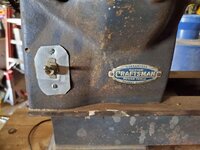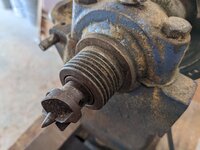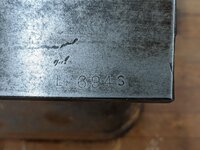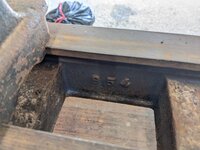I may have higher standards than others...I don't know. Maybe I just have a knack for finding the limitations and shortcomings of the machines I use...
Anyway, I started with a Nova 14DR and hated it. I found it to be extremely cheaply made, and in less than a year it had developed repetitive problems with the control box and headstock/motor. Teknatool sent me no less than FOUR as a replacement control boxes, despite my insistence that the problem appeared to be with the motor (which they refused to acknowledge at first..) I had some extremely odd calls (even disturbing, one of the guys couldn't seem to string two coherent sentences together, and would periodically suddenly and unexpectedly shift back to a prior train of thought...strangest tech support experience I've ever had) with their clearly overworked and hyper-stressed support staff trying to fix the issue with the third replacement over the phone (which produced exactly the same results, no impro, before I finally managed to get them to RMA the device in late September 2020. Sent it back to them in October of 2020, did not get it back until January 2021. They eventually acknowledged that there was something wrong with the headstock and motor. When I receive it back, the headstock had a very loud scraping sound that did not exist before and that I've never been able to eliminate...honestly don't know how anyone would consider that "fixed"... Needles to say, I wasn't happy with the experience in any way, shape, or form. Took half a year to resolve the issues and in the end I was still left with issues.
In any case, the thing sits in a box unused like a useless brick now. I've basically written off Nova/Teknatool given the experience. I have a couple of their chucks and plenty Nova jaws, but I ended up picking up a Record Power chuck when I needed a larger one, which is compatible with Nova jaws. The Record Power chuck is extremely nice, sealed, has never once needed to be disassembled and cleaned like the Novas (which require maintenance every couple of months, involving removing the retaining clip on the back to disassemble, fully clean to get all the grime out that causes stickiness, after which it is usually a huge ordeal to get everything realigned properly so it can be reassembled...I do this for each chuck about every 7-8 weeks).
I replaced the Nova brick with a Wen 14x20 lathe, which IMO, despite being slightly cheaper dollar wise, is a much better designed and built lathe. Its not a perfect lathe, but its been a reliable workhorse for sure. I've turned most of my pens on the Wen. It has been very reliable since I started using it November 2020 (bought it Black Friday that year, as I honestly had no clue when Teknatool might return the Nova to me, if they ever did, as I'd effectively been ghosted by them at that point). Initially the tailstock had some slight slip, and I couldn't adjust the clamp on it to fix the issue. Wen had no issues sending me an entirely new tailstock, no questions asked beyond the initial inquiry into what the problem was, which arrived in a matter of days, New tailstock has worked perfectly since I got it, and I still use it without issue today.
Anyway...that was my experience with the Nova 14DR. It was my first lathe, February 2020, and I've wished I bought a different lathe to start out with since about July 2020 when it started having problems. I think you can do better, if you look around a bit, expand your options a bit, and maybe even try some out before you buy. FWIW, the Grizzly you linked, looks like it is very, very similar if not even the same as the Nova 14DR...design wise, parts wise...so it makes me wonder. There is also Rikon, Jet. IMO, Jet is very, very solid!! Hard to go wrong with them.
I now use a Powermatic 3520C and the Wen 14x20....and something I like about both, is that they are fairly quiet. The 14DR, with hindsight now, was a rather noisy lathe!!





